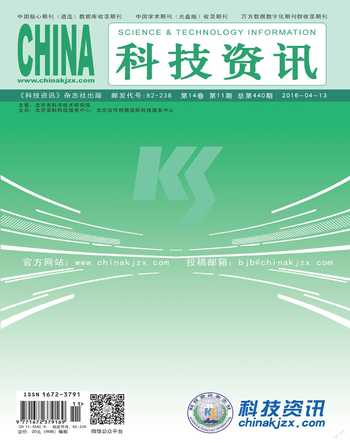節能降耗污泥脫水裝備及制備建材技術與示范
宋繁永 劉豐 周立祥
摘 要:我國污水廠建設存在嚴重的“重水輕泥”現象,導致大量污泥“積壓”,未得到合理的安全處理處置,存在二次污染的隱患。近年來,國家對于污泥的處理處置日益重視,但目前我國正在運行的市政污泥處理處置工程,均存在能耗高、核心裝置故障多、工藝運行不穩定的問題,導致我國市政污泥的能源化與資源化利用水平低等的共性問題。本項目通過開發節能降耗型污泥脫水技術,實現污泥的能源化與資源化利用,建設污泥減量及資源化利用示范工程。在保持污泥原有有機質和熱值等有益成分不變的前提下,通過研究生物瀝浸預處理污泥工藝與技術,顯著改善污泥機械脫水性能;開發高效節能污泥機械脫水設備,將污泥含水率降低到60%以下,同時保證預處理環節和脫水設備實現自動化控制,數據自動采集,實時監控。在此基礎上,研發深度脫水半干化污泥建材化的利用途徑,通過技術集成優化,形成市政污泥高效脫水關鍵設備設計準則、運行指南和技術標準,為我國污泥資源化利用及其產業化發展提供技術支撐。深入分析測試了污泥基本性質,通過對采集了典型城鎮污水處理廠污泥進行了50多個指標的分析測試,了解里了污泥水分狀況以及表面電荷情況,為污泥脫水性能的調理奠定了理論基礎。結果上看,城市液態污泥比阻大,難脫水;污泥富含有機質和氮磷植物養分;也含有重金屬和難降解有機污染物。研究了污泥生物瀝浸處理中微生物區系和EPS對脫水性能的影響。污泥經過生物瀝浸處理后可通過隔膜廂式壓濾脫水機一步脫水到含水率?60%的污泥餅。但生物瀝浸提高污泥脫水性能的機制尚不十分清楚,本年度主要從自養菌和異養菌菌落形成單位數(CFU)的相對變化及EPS兩方面來探討其影響機制。改良式化學調理劑的研制及其調理機理研究。 針對含水80%左右的脫水污泥,在研制添加量低(污泥干物質的15%以下)、成本低、易產業化、滿足后續資源化利用的調理劑方面做了深入研究。節能降耗模塊化立式污泥脫水裝備的研發。針對目前污泥廂式或板框壓濾脫水設備占地大、自動卸料和濾布清洗的效果不好;濾布變形較大、易損壞、壽命短等問題,研發占地少節能降耗模塊化立式污泥脫水裝備,對裝備構件中可變腔式過濾模塊構型、過濾模塊間自動密封技術、濾料自動脫落裝置等做了研究,探討了生物瀝浸處理污泥焚燒處置效果及影響因素。比較了生物瀝浸處理后深度脫水污泥(含水約60%)與常規脫水污泥(含水約80%)在室溫條件下水分蒸發速率的差異,以評價其干化效果。
關鍵詞:節能降耗 ; 污泥脫水; 建材制備
Abstract:There is a serious "wastewater first, sewage sludge second" phenomenon in the construction of wastewater treatment, large number of sludge has not been safely treated and disposal. Recently, the government has paid more and more efforts on the sludge treatment and disposal, but problems such as high energy, multi-core device failure, process running instability were existed in current methods. This project has developed energy-saving sludge dewatering technology, made it possible for the sludge utilization, the construction of sludge reduction and resource utilization demonstration project. As maintaining the original organic matter and calorific value and other ingredients, significantly improved mechanical sludge dewatering performance was achieved by studying bioleaching pretreated sludge process and technology. The energy efficient mechanical sludge dewatering equipment could be used to reduce sludge moisture content below 60%. At the same time the pretreatment part and the dewatering equipment were combined automatic control, automatic data collection, real-time monitoring. The formation of municipal sludge dewatering efficiency of key equipment design criteria, operational guidelines and technical standards for the utilization of sludge should be done. The basic properties of the sludge were analyzed through the collection of the typical municipal wastewater treatment plant sludge. More than 50 indicators were analyzed to study where the moisture and surface charge conditions. These tests performed a theoretical basis for the sludge dewatering process. In the results, the liquid sludge performed higher specific resistance, which made the sludge difficult to dehydrate. The sludge bioleaching process and EPS effects on the sludge dewatering performance were studied. After bioleaching sludge could be treated to a moisture content of 60%. The relative change of EPS and autotrophic bacteria and heterotrophic bacteria colony forming units (CFU) were learned to investigate the impact mechanism.
Key words:energy-saving, sludge dewatering, construction material preparation
閱讀全文鏈接(需實名注冊):http://www.nstrs.cn/xiangxiBG.aspx?id=64318&flag=1

